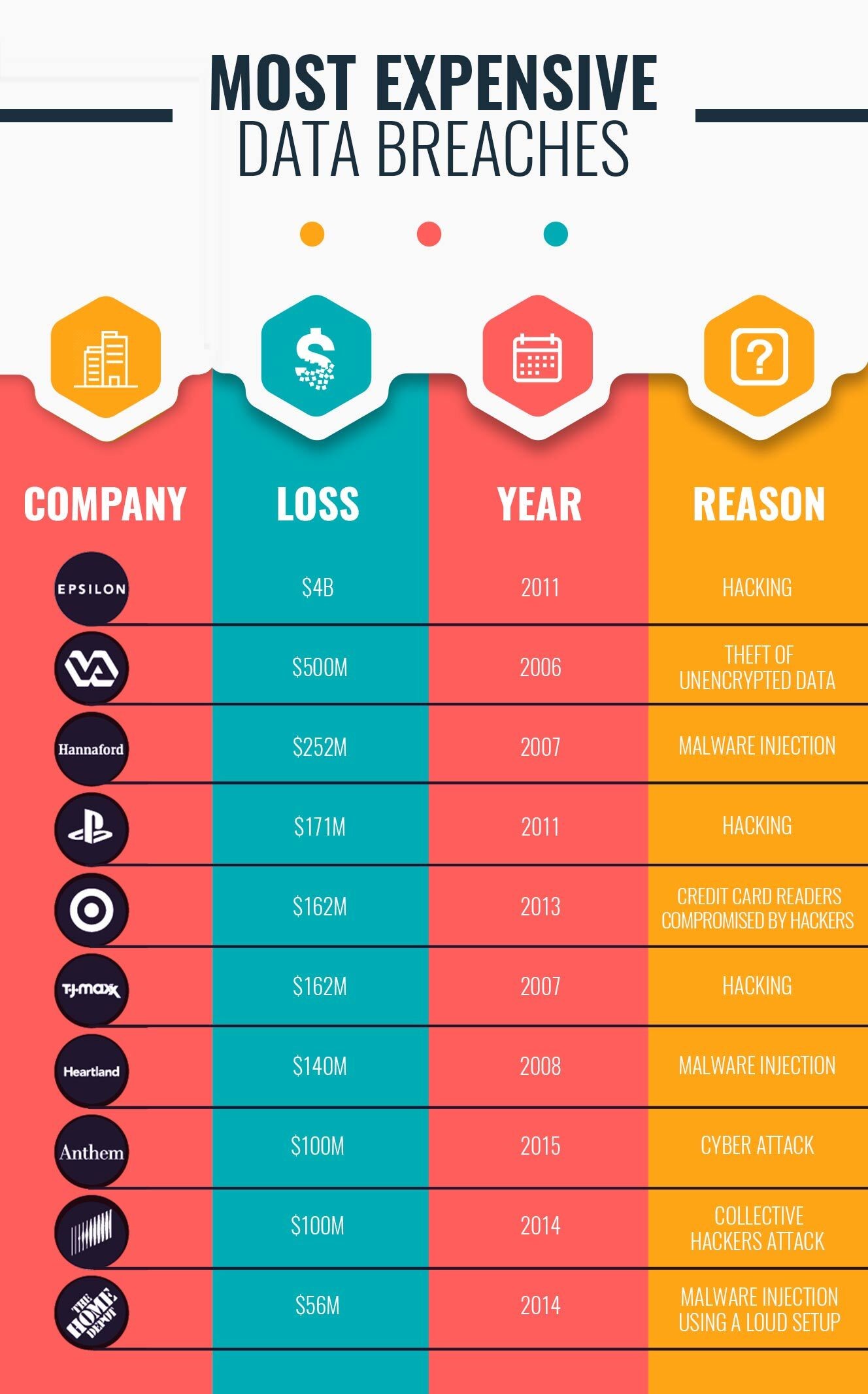Technology has grown to a rate where it now puts organizations at risk of cyber-attacks. This problem continues to compound as technologies become more advanced. The cost of data breaches is expected to be over $20 trillion by the end of the year. Hackers are creating bigger threats than ever, while companies continue to lose the trust of their customers with every breach. Here is how big data helps avoid cybersecurity threats.
By this point, we all know how important data is for business, so we need to protect it. Fortunately, big data helps avoid cybersecurity threats by giving businesses a way to predict and identify potential risks. Analytics is the key to so many things in today’s business world, and so we can add cybersecurity to that list.
It’s not just enterprises that are at risk either. Small businesses are also popular targets of cyber hackers. The cyber threat is real, and it is now.
The Importance of Addressing Cyber Security Threats
We’ve all read the horror stories of massive data breaches from big companies. They are quick to take action (in most cases), but by the time they do, the damage has already been done. This is why it is a good idea to seek help from a good data management company like Data Entry Outsourced. It costs them billions in some cases. With that said, here are some statistics that will motivate you to take action.

- Two in every three businesses that were surveyed experienced a cyber-attack on some level.
- Malware on mobile devices had reached 54% by 2017, which forced providers to develop more secure systems.
- Juniper’s research estimates that 33 billion records will be stolen in 2023.
- 60 million people in America have been the victim of identity theft.
- The U.S. government will spend $15 billion in cybersecurity by the time 2019 is over.
- Americans are more worried about a cyber-attack than a terrorist attack, according to a study performed by Gallup.
Overcome Cyber Security Issues by Following these Six Tips
Now that you understand the importance of enhancing the cybersecurity of your business, let’s look at how big data helps avoid cybersecurity threats.
#1: Foresee Potential Threats
Using analytics provides businesses with the potential to foresee potential threats. It also shows the level of threat and the potential type of threat that a company is at risk of getting. In addition to all of this information, analytics can provide even more advanced metrics like the complexity of a potential attack and weigh the pros and cons of installing certain security systems. This is done by analyzing historical data to look at specific trends to find matches for areas where your business might be vulnerable.
#2: Use Big Data to Monitor Employee Activity
Businesses must have a system in place that monitors employee behavior and these systems are heavily reliant on big data analytics. Whoever is in charge of compliance can then monitor all the behaviors of specific employees to determine whether there are security concerns. Furthermore, employees must have limited access to data, especially sensitive information. In fact, sensitive information must be limited to only those who absolutely require it. Having an analytical system in place will provide valuable insight into ensuring that these systems are secure. Sometimes the data that employees need access to will change over time so having the proper system in place ensures that these roles are updated as needed.
It’s also important that businesses monitor activities when they hire outside contractors to perform sensitive work, like having data entry outsourced. A lot of data leaks and security issues come from outsourcing so make sure these areas are being monitored.

#3: Intelligent Risk Management
It’s essential that a business uses highly intelligent tools to interpret their data so that they can put proper risk management plans into practice. But before setting up these systems, a business will need to determine exactly what areas need to be protected. Unfortunately, there is no system that can protect everything equally. That’s one of the ways how big data helps avoid cybersecurity threats. It provides a risk assessment that will show the areas that are most likely to be compromised. This will be different for each business. Cyber-security is layered and should be designed to protect the most vulnerable data first.
#4: Use Intrusion Detection Systems (IDS) to Combat Hackers
Data analytics can detect irregular activities by using networks, logs, and system events. The problem is that cyber-attacks are becoming more sophisticated as technology advances, so it’s essential that businesses take advantage of this by using intrusion detection systems. One great example is a NIDS system, which is now the recommended approach to dealing with cybersecurity threats. Having the right analytical tools is not enough. We need tools that relay this information in real-time to the right people in order to detect potential threats.

#5: Penetration Testing
Having a security team perform regular penetration tests provides businesses with the proper insight into what areas might be at risk of hackers. By identifying these vulnerabilities, businesses are able to develop the right measures to better protect these areas. Penetration testing involves five stages:
- Planning
- Scanning
- Gaining Access
- Maintaining Access
- Analysis of Results
In the end, IT officials are able to enhance firewalls and other security policies.
#6: Using Historical Data to Predict Attacks
There are specific times when attacks are more likely so using data analytics provides businesses with information on trends and other patterns that make attacks appealing. Big data can be combined with machine learning to develop innovative new cyber-security options. This is usually done by analyzing previous attacks and then learning the proper preventative techniques. Again, it’s essential that the right people are notified by these systems when there is the possibility of an attack.
Protect your Customers’ Information at all Costs
Learning how big data helps avoid cybersecurity threats is an important step to providing better security for your customers, thus building trust. Having the proper systems in place will allow you to assess the risks of a potential attack and help create counter-measures for when they occur.








